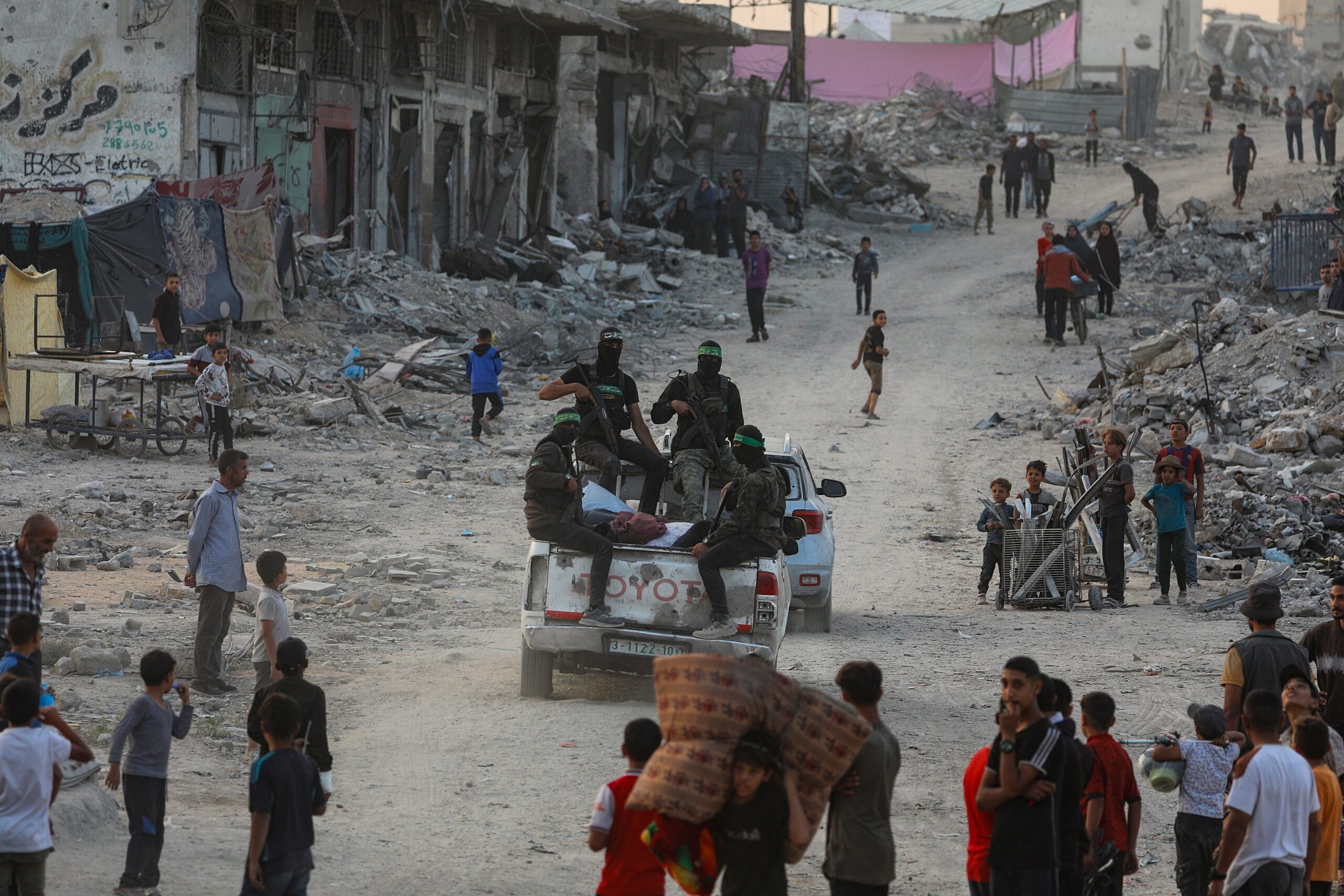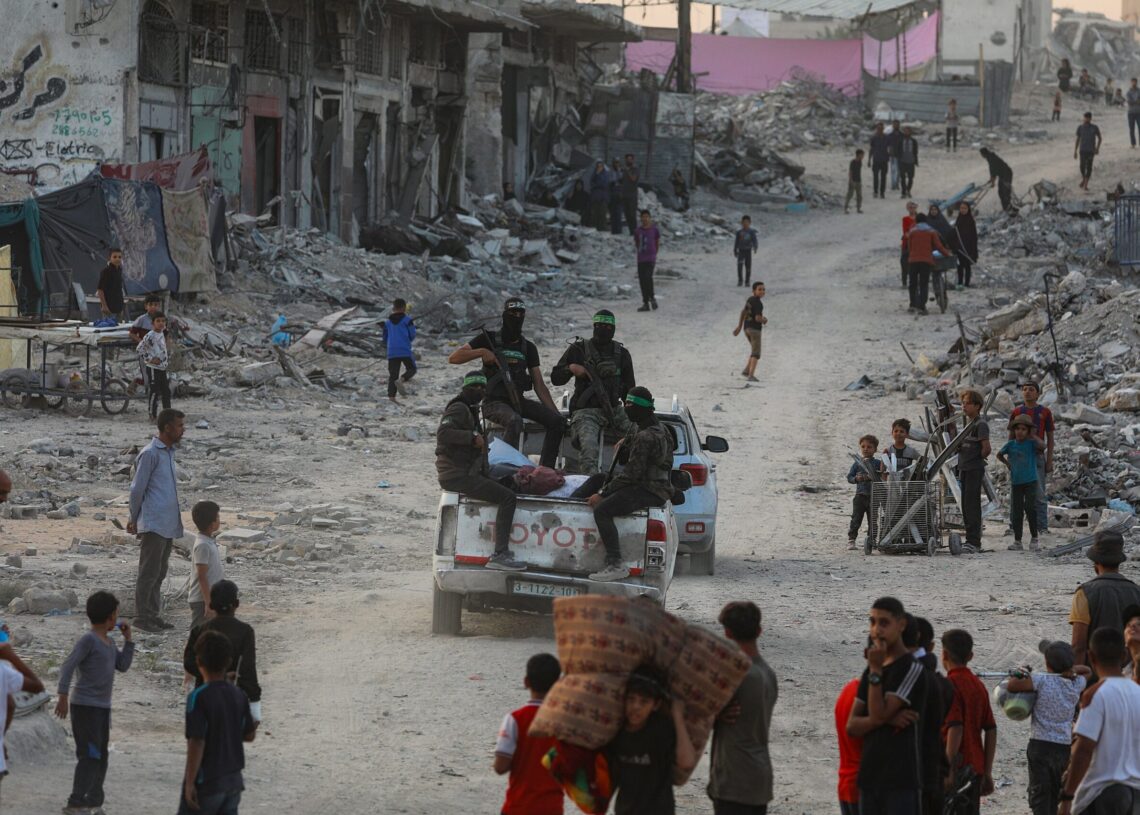
A dispute over the fate of as many as 200 Hamas fighters trapped inside tunnels in an Israeli-controlled area of Gaza is complicating the Trump administration’s efforts for peace, with the United States pressing Israeli Prime Minister Benjamin Netanyahu to give the militants safe passage.
The disagreement over the fighters, who became stranded behind Israeli lines in Rafah after a ceasefire was announced last month, has underscored the broader potential pitfalls of the deal — including the thorny issue of disarming Hamas and growing Israeli frustration over what some officials see as U.S. interference in the country’s national security.
A dispute over the fate of as many as 200 Hamas fighters trapped inside tunnels in an Israeli-controlled area of Gaza is complicating the Trump administration’s efforts for peace, with the United States pressing Israeli Prime Minister Benjamin Netanyahu to give the militants safe passage.
The disagreement over the fighters, who became stranded behind Israeli lines in Rafah after a ceasefire was announced last month, has underscored the broader potential pitfalls of the deal — including the thorny issue of disarming Hamas and growing Israeli frustration over what some officials see as U.S. interference in the country’s national security.
“The bottom line is that this problem could threaten the agreement, but American pressure is continuous,” said a former Egyptian official with knowledge of the talks, who spoke on the condition of anonymity to discuss the negotiations. Egypt has served as a key mediator in the talks and shares a roughly eight-mile border with the Gaza Strip that includes Rafah.
The former official said Jared Kushner, the son-in-law of President Donald Trump, who is in Israel this week, has pressed for a solution. The U.S. has emphasized that Israel refrain from killing the militants, he said, adding that it would “detonate the ceasefire agreement and thus doom the Trump plan.”
Trump’s proposal, which he unveiled in September, laid out a 20-point plan for peace after two years of war, including the destruction of military and weapons infrastructure in Gaza, which is slated for the plan’s second phase.
As part of that process, weapons would be placed “permanently beyond use,” the plan says, and the United States hopes the militants who are trapped will give up their weapons and offer an example of how the broader demobilization of Hamas could work.
Hamas has “always indicated” that it will disarm, Trump’s Middle East envoy, Steve Witkoff, said in remarks at a Miami business conference last week. “I hope that they keep their word, because if they do, they’ll understand that the development plan that we have for Gaza is really terrific,” he said, describing the case of the stranded fighters as a “model” for how to proceed.
According to Witkoff, some 200 fighters are cornered in the tunnels, while the Israeli military has said that estimates of between 100 and 200 militants are in the right “ballpark.” A Hamas official, speaking on the condition of anonymity to discuss the sensitive issue, also said that the discussions are focused on an estimated 150 to 200 fighters in Rafah.
But for Netanyahu’s right-wing government, the notion of allowing the marooned fighters safe passage is both repellent and politically fraught. The militants already have clashed with Israeli forces, killing three soldiers, according to the military, which responded with punishing airstrikes that killed nearly 150 Palestinians.
Hamas fighters also led the Oct. 7, 2023, assault on southern Israel, killing about 1,200 people and abducting about 250 others.
Israel’s retaliatory campaign in Gaza has destroyed much of the enclave, killing more than 69,000 people, according to the local health ministry, which does not distinguish between civilians and combatants but says the majority of the dead are women and children.
For Israel, the bloodshed makes a deal to allow the fighters to go free all the more sensitive, said Yossi Kuperwasser, a retired brigadier general who heads the Jerusalem Institute for Strategy and Security.
“It’s going to be difficult for him,” Kuperwasser said of Netanyahu. “To let them get away with murder is not going to be popular.”
Hamas, in turn, has vowed that the gunmen will not surrender to Israeli forces.
“Let the enemy know that the term ‘surrender’ does not exist in the dictionary of the al-Qassam Brigades,” Hamas’s armed wing, formally known as the Izzedine al-Qassam Brigades, said in a statement this week.
Potential solutions include having the men disarm before exile to a third country, the former Egyptian official said.
The standoff comes, however, as the ceasefire agreement is still stuttering through its first phase — with each side yet to complete key elements of the deal.
The plan calls for the unrestricted entry of humanitarian aid into Gaza, but the Rafah crossing between Egypt and the enclave, which is now controlled by Israel, remains closed.
Hamas and allied militants have yet to hand over the remains of four deceased hostages, including three Israelis and a Thai national.
Still, the second phase of the agreement will be far more difficult to implement, analysts say. It envisages an international stabilization force for Gaza, a further pullback of Israeli forces and the demobilization and reintegration of Hamas and other militant groups such as Palestinian Islamic Jihad.
The continued tussle over the trapped fighters has emerged as a test case of how things could progress and an indication of how much leverage the U.S. is willing to use with Netanyahu to push forward with Trump’s plan.
“It symbolizes a lot of the problems that may emerge down the road,” Kuperwasser said. “Beyond the political problems that it poses to Bibi, it’s a real issue,” he added, using a nickname for Netanyahu.
In Israel, the idea of disarming the militants in the tunnels doesn’t make sense unless it’s part of a wider effort to demilitarize Hamas, he said: “If it’s not in the context of a wider readiness to give up their arms, why should we let them go back?”
Far-right politicians in Israel, including members of Netanyahu’s cabinet, have seized on the discussions and made clear their opposition to negotiating the fighters’ release, with Finance Minister Bezalel Smotrich describing the talks as “utter madness.”
They’ve also bridled at what they see as U.S. meddling in the conflict. As Kushner arrived in Israel this week, Knesset member and former defense minister Avigdor Lieberman referred to him mockingly as Israel’s “acting prime minister” and described Witkoff as a “member of the security cabinet.”
At a meeting in the Knesset on Monday, Lieberman said it was important to make the Israeli public’s position clear. “They have only two options: either surrender and sit in an Israeli prison, or die,” he said of the militants. “There is no third option.”
But the U.S. already has shown it is willing to pressure Netanyahu, including by pushing him to accept the ceasefire deal in the first place, despite opposition from his far-right allies in government. The U.S. military is now running a ceasefire “coordination center” in southern Israel and is replacing the Israeli defense agency that coordinates Gaza aid.
“It’s very clear that the Americans are calling the shots now,” said Amos Harel, a journalist and military affairs analyst at Israel’s Haaretz newspaper. “What it all ends up with, is a question of how much pressure America can apply and how quickly the prime minister will give in.”
Hazem Balousha and Siham Shamalakh contributed to this report.
The post The fate of dozens of trapped Hamas fighters is hindering Trump’s Gaza plan
appeared first on Washington Post.




